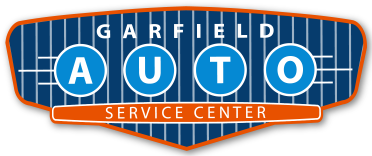All-Wheel Drive vs. Four-Wheel Drive: How They Work
Northern Michigan drivers face long, icy, and snowy winters, which is why so many of us drive all-wheel drive or four-wheel drive cars and trucks. If you’re in the market for a winter-ready vehicle, it’s important to understand the difference between an AWD and a 4WD vehicle and whether one is the better option for you and your family.
Is All Wheel Drive the Same As Four Wheel Drive?
While similar, AWD and 4WD are distinct propulsion systems. Each has its benefits and use cases; AWD is more commonly used in cars and SUVs, while 4WD is the heart and soul of most pick-ups.
What Is AWD?
AWD systems use special sensors that allow your vehicle to decide when to use all four wheels to propel the vehicle and when to use only two. This has several advantages, including:
Driver can focus on the road
Balances fuel economy and traction
AWD systems are primarily designed for road use but can improve off-road driving characteristics to a degree.
How does all-wheel drive work?
AWD is available in a wide range of cars and SUVs. These systems connect all four wheels to the engine and automatically distribute power between the front and rear wheels. Under normal driving conditions, the sensor will cut power to the front or rear wheels completely, opting for the improved fuel efficiency of two-wheel power.
What Is 4WD?
As the name suggests, four-wheel drive links the front and rear wheels together, distributing power evenly between them. Also known as “4x4”, four-wheel drive systems have a few key characteristics that make them appealing to some drivers, such as:
Tough, durable, and designed to handle extreme offroad conditions
Often found in vehicles with high tow capacity
How does 4WD work?
4WD is usually available on pick-ups and some SUVs. A 4x4 works by connecting the front and rear wheels using a transfer case, which is a piece of equipment to split power evenly between the front and rear. Crucially, a transfer case also makes both axles turn at the same speed. This is ideal for towing heavy loads or off-roading but doesn’t maximize traction like AWD systems on icy or snowy pavement. Most 4WD vehicles have a manual switch that lets the driver decide when to use 4x4 mode. Because 4WD isn’t fuel efficient, it’s best to reserve it for slow, low-traction scenarios like off-roading.
Related: Don’t Skip a Pre-Purchase Car Inspection
Is All Wheel Drive Better Than 4x4?
Neither system is inherently better, but AWD is more applicable to the kind of driving most people do. AWD increases traction on wet, snowy, and icy roads, the exact scenarios you face year-round, particularly in winter. 4WD is best reserved for off-roading or towing, though they do improve traction in snowy conditions. Most manufacturers recommend against using 4x4 mode at highway speeds.
We Repair AWD and 4WD Vehicles
No matter what you drive, Garfield Auto is Traverse City’s trusted 4x4 and AWD repair shop. We work on all makes and models, including Subarus, Hondas, Toyotas, and more. Keep your vehicle on the road for the long haul with prompt and professional repair services from Garfield Auto Service Center - schedule your appointment today!

